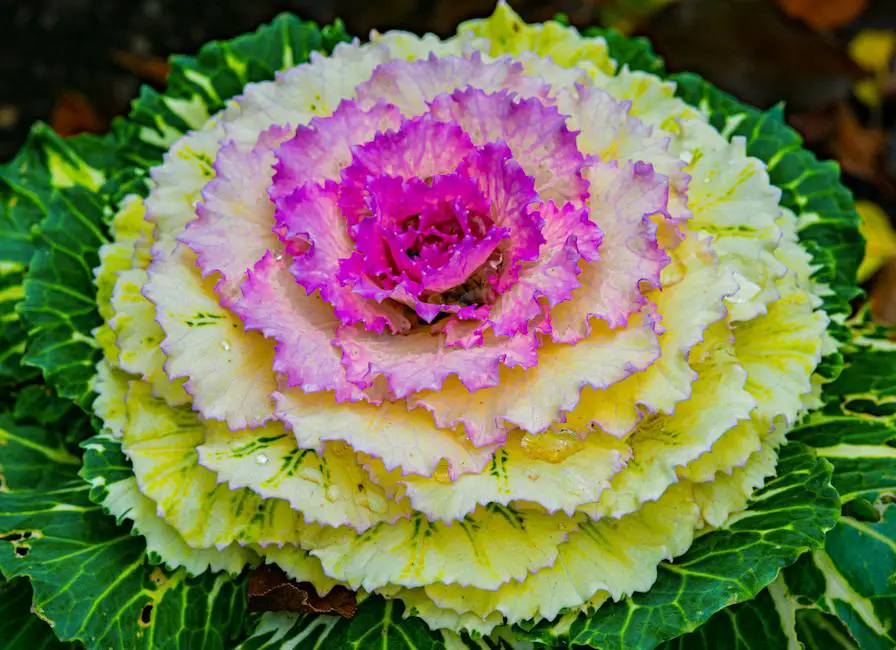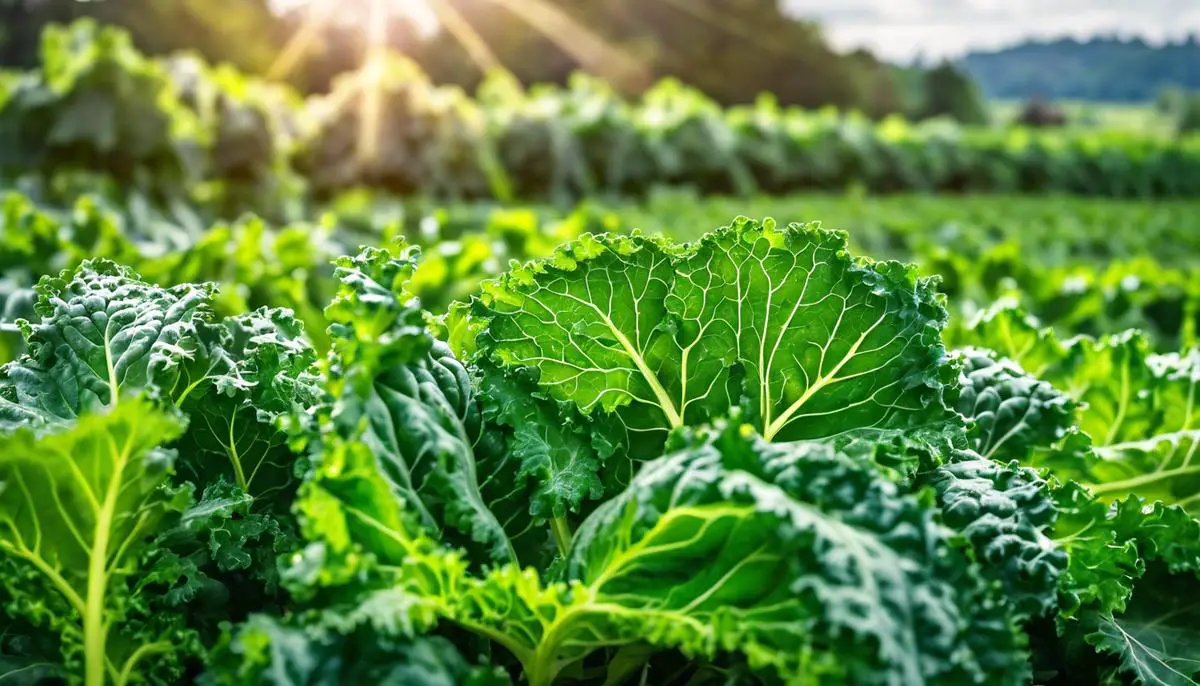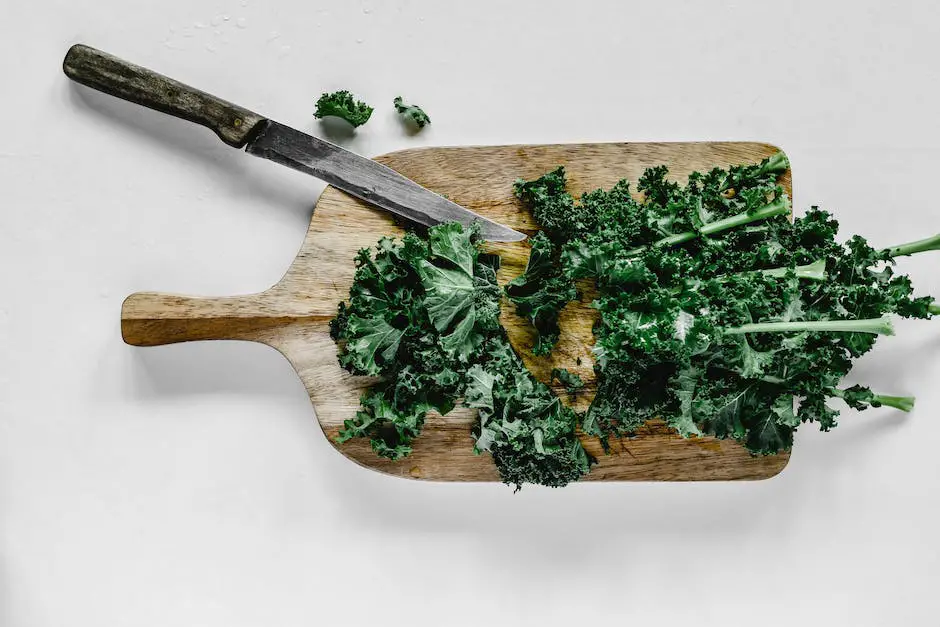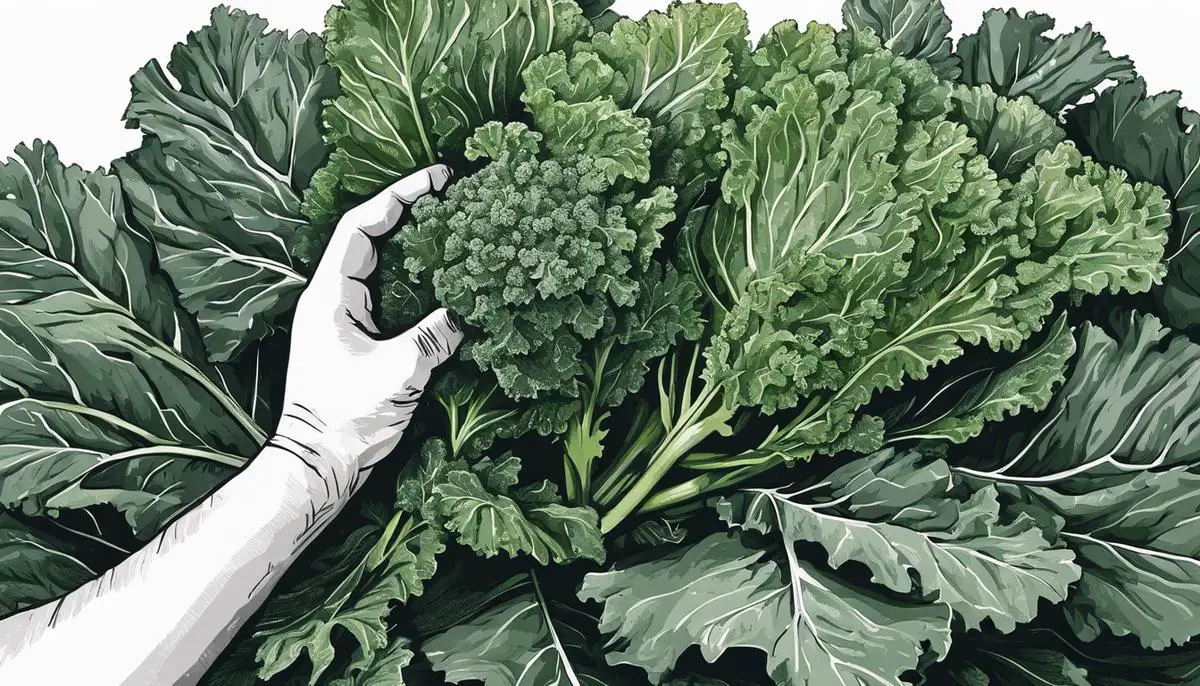Gardening enthusiasts and health-conscious eaters alike understand the value of a homegrown vegetable like kale. This nutrient-dense leafy green has become a staple in kitchens across America, both for its versatility and its health benefits. But to truly enjoy the fruits of your labor, knowing when and how to harvest your kale is crucial. In this guide, we’ll delve into the art of reaping your kale at its prime. By learning the telltale signs of maturity and mastering the technique of selective picking, not only will you guarantee the freshest produce for your table, you’ll also ensure your kale plants continue to provide bountiful harvests throughout the growing season.
Identify Harvest Time
The Secret Timing to Harvesting the Perfect Kale
When one speaks of kale, you’re delving into the world of hearty greens that not only adds a nutritious punch to your meals but also brings a beautiful, leafy aesthetic to your garden. Oh, how the sight of those lush, crinkling leaves can make a food lover’s heart flutter! And, yes, while it’s often available year-round in grocery stores, there’s something magical about plucking it straight from the earth, where you’ve nurtured it from a seedling. But the question looms: when is this beloved veggie ready to jump from garden to your gourmet dishes? Read on, fellow epicureans, to unlock the secrets to harvesting kale at its peak!
Reader Poll: What online courses would interest you?
First and foremost, kale aficionados should note that timing is everything. Kale is typically ready for harvest 55 to 65 days after planting if you’re growing from seeds, or around 30 days after transplanting if you start with seedlings. But who needs to count days when the kale itself tells a more delicious tale?
Keep your eyes on the prize — size matters when it comes to kale leaves. Marks of readiness are leaves that are about the size of your hand. Ignore the smaller, tender leaves at the top of the plant; those are still in culinary school, learning the flavorful arts. Instead, focus on the mature, robust leaves lower on the stalk. They’re the ones ready to graduate to your plate.
But don’t just look — touch! Ready-to-harvest kale will have a firm, yet pliable feel. The leaves should not be too soft or withered, as that’s the kale’s way of saying, “I’ve waited too long for my big moment!” Conversely, if the leaves showcase a tough exterior, as if gearing up for battle, they’re likely too mature and might impart a more bitter flavor when cooked.
Subscribe to our newsletter!
Yield to the kale’s color, and it will guide you to harvest time. You’re looking for deep hues of green, or purple if you’re jazzing it up with ornamental varieties. Discoloration or yellowing leaves are the garden’s way of giving a thumbs-down; those leaves are past their prime, having missed their moment in the culinary spotlight.
Harvesting is a snip-and-go process. Use clean, sharp scissors or pruning shears, and cut the chosen leaves at the base of the stem, careful not to disturb the tiny royals still ascending to the throne atop the stalk.
Remember, kale is a giver — it keeps on producing as long as you keep on harvesting. Begin at the lower leaves and move upwards over time, ensuring a continuous supply of this beloved green.
Lastly, there’s an art to the aftercare. Once harvested, kale can be stored in the refrigerator for about a week, but it’s best when it graces the dinner table fresh. Think of kale as the VIP guest at your meal; it requires immediate attention and appreciation.
With these simple cues, you’ll never second-guess your garden’s offerings. Learning when to harvest kale is a rite of passage for any true food enthusiast, a small yet significant step closer to the bountiful blend of flavors and experiences that are woven into the tapestry of culinary arts. So, don those garden gloves and snip your way to a fresher, tastier kale-idoscope in your kitchen adventures. Bon appétit!

Proper Harvesting Technique
Harvesting Kale: Ensuring Freshness & Vitality for Your Next Culinary Creation
Adventurous food lovers and kitchen enthusiasts, prepare to be enlightened on the art of plucking kale from your garden in a way that sustains both the plant’s vitality and the quality of your leafy greens. Kale, that nutrient powerhouse, can elevate any dish, whether it’s folded into an earthy risotto or crisped into delicious chips. The secret to having kale at one’s fingertips lies in the harvesting technique.
When you’ve established that your kale is ready to journey from garden to kitchen, approach the process with gentle hands and a sharp pair of scissors or pruning shears. This isn’t just about a harvest; it’s about encouraging future growth for more delicious greens. Aim to clip the outermost leaves first, choosing well-sized, matured leaves that have fully developed their robust color; these are typically the oldest and have had their sunbath. By trimming these leaves, you not only secure yourself the prime cuts of the plant but also allow the inner, younger leaves space and sunlight to grow.
Be sure to leave the center leaves and growing tip – often referred to as the crown – intact. This is the heart of production, where new leaves will emerge, so a food lover who dreams of an endless kale supply must guard it carefully. When removing the selected leaves, cut close to the base, but with precision, never bruising or tearing the stems. Rough handling can open the door to disease or stunt growth, clearly undesirable outcomes for the plant or the palate.
Remember, kale is more than just produce; it’s a garden resident that gives back endlessly, with proper care. After embracing the ritual of proper harvesting, storing your bounty becomes the next step. Whether it’s for immediate sautée or saved for a robust stew later in the week, knowing how to pick kale correctly ensures each leaf is at its peak of flavor and texture.
Happy harvesting means that the next dish is bound only by the imagination. From rustic, creamy soups to invigorating salads, the well-harvested kale from your garden is a testament to the love shared between grower and chef. The connection between earth and table is deepened with every meal, as we nurture both our green companions and our human ones through the joyous act of cooking and savoring together.

Post-Harvest Handling and Storage
Once the harvesting basics are out of the way, a true food enthusiast knows that keeping kale fresh is the secret to vibrant, nutrient-packed dishes. The journey from garden to table doesn’t have to be rushed—if you know how to pamper those leafy greens.
First up, cleaning is key—gently rinse the kale leaves under cool running water, but don’t be too vigorous as you might bruise the tender leaves. Pat the leaves dry with paper towels or take it a notch up with a salad spinner, which makes quick work of the task while adding a fun spin to your kitchen routine.
After the kale is clean and dry, the magic trick to prolong freshness is proper storage. Grab those breathable plastic bags you’ve got stashed away—these are perfect for keeping moisture at bay. If one wishes to go the extra green mile, reusable produce bags made from mesh nurture both your kale and the planet.
Next up, paper towels enter the scene once more, they’re not just for spills! Layer them between the kale leaves inside the bag—it’s like a mini spa for your greens, soaking up excess moisture and keeping everything crisp.
Now for the cool factor—make room in your fridge’s crisper drawer. This little nook is engineered to hold the fort on freshness. Your prepped bag of kale tucks in here, cozy and cool until you’re ready to roll out your next culinary masterpiece.
Don’t let your kale camp out in the fridge for too long though! Remember, fresh is best, and while these tips keep things crisper for longer, they’re at their peak when used within a few days of harvesting. So, get creative in the kitchen!
There are endless opportunities to let fresh kale shine in dishes. Toss them into salads, sauté with garlic for a robust side, blend into smoothies, or make a mean batch of kale chips. When kale is fresh, each bite speaks volumes of the love and care from both the grower and the chef’s touch in every dish. The communion of good food is never more evident than when a meal starts with ingredients at their freshest, ends on a satisfied palate, and is shared among friends and family. There’s nothing quite like the journey from soil to supper, where every leaf tells its own garden-fresh tale. Happy feasting and savor those greens!

Embracing the routine of kale harvesting will undoubtedly enhance your culinary experience and contribute positively to your well-being. With a new-found understanding of harvest timing and proper technique, you can boast a garden that thrives and delivers the very best of this leafy green. Beyond the harvest, your proficiency in handling and storing kale will preserve its qualities, ensuring that every meal is enriched with the taste and nutrition of freshly picked greens. May your kale be plentiful and your meals be evergreen!

